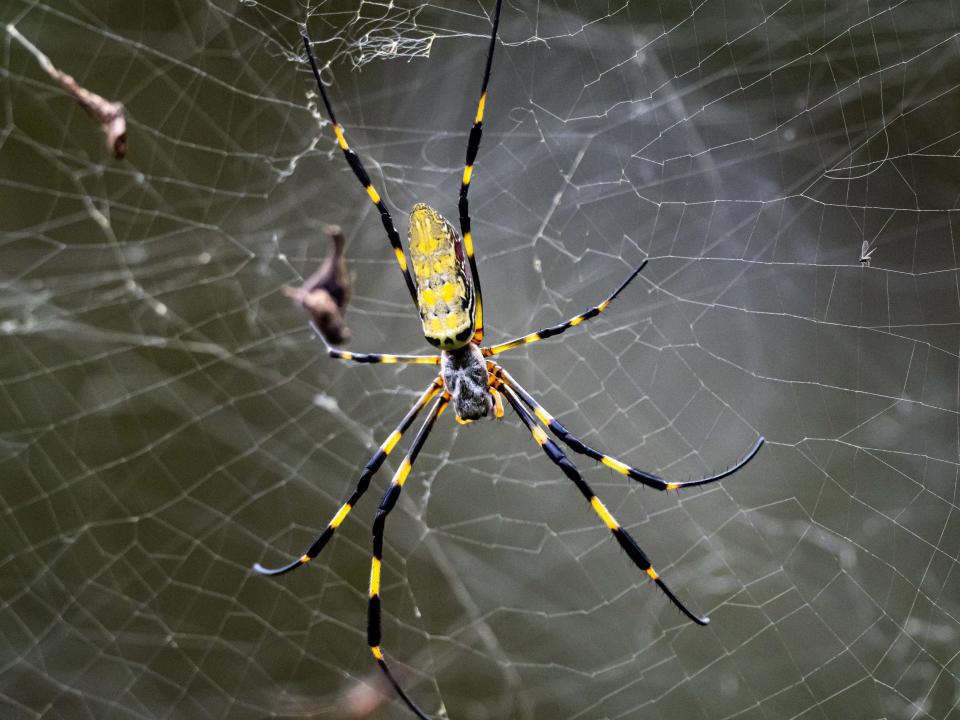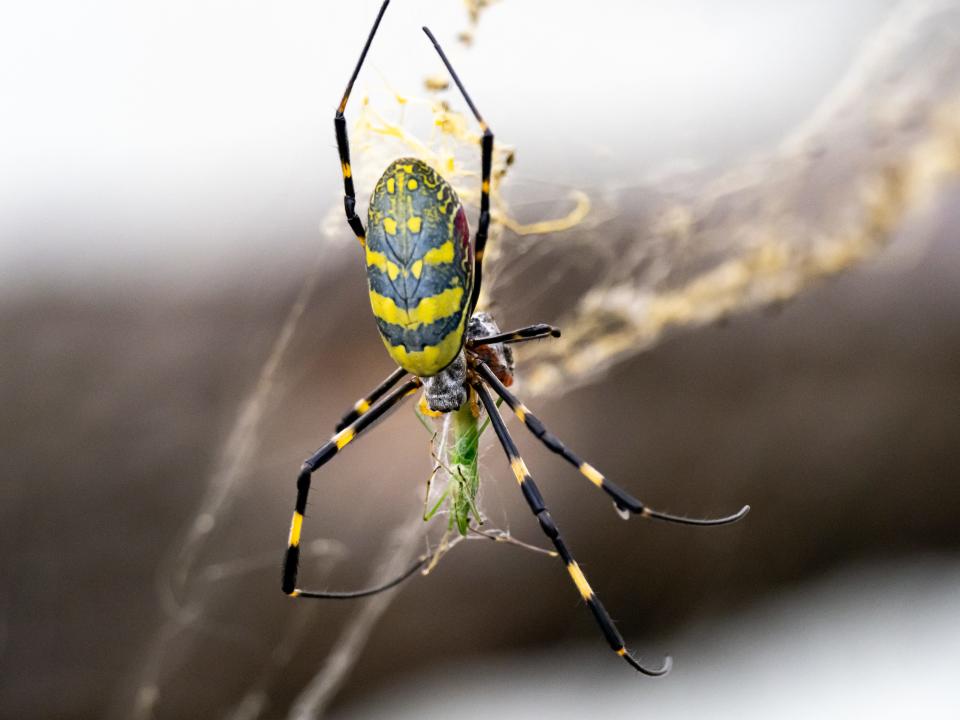Joro spiders, huge and invasive, spreading around eastern US, study finds
The latest species of spider found in the U.S. are huge, brightly colored and travel in a method described as "ballooning." And, according to new research, they're spreading out to new states around the country.
Researchers at Clemson University published a study on Joro spiders, coming to the conclusion that the species is spreading rapidly beyond the South Carolina area, and data shows they could inhabit most of the eastern U.S.
David Coyle, a scientist and professor at Clemson, had one major takeaway from the results of the study: "These things are here to stay."

The study assessed the Joro spider's native range and used 20 variable and advanced modeling techniques to quantify its habitability elsewhere.
“Those data show that this spider is going to be able to inhabit most of the eastern U.S.,” Coyle said in a release from Clemson. “It shows that their comfort area in their native range matches up very well with much of North America.
But what is the Joro spider, where did it come from and is it harmful to humans? Here's what to know.
Study: Climate change is moving vampire bat habitats and increasing rabies risk
Where do Joro spiders come from?
Native to East Asian countries including Japan, Korea, Taiwan and China, the Joro spider first made its way to the U.S. around 2013 to 2014.
As of 2022, the Joro spider's range in the U.S. is around 120,000 kilometers, spread across Georgia, South Carolina, North, Carolina and Tennessee, with reports of the spider in Alabama, Maryland, Oklahoma and West Virginia, according to Clemson.
What is a Joro spider?
Joro spiders are also known as Trichonephila clavata.
Measuring around 3-4 inches, female Joro spiders are larger than the males, and are primarily yellow with dark blue strips and a reddish abdomen. Males are smaller and thinner – just over a quarter of an inch – and are brown, with a dark gray/black and yellow stripes.

They prefer the warmth of the sun and are not indoor house spiders. The species belongs to a group of large spiders known as golden orb-web weavers, according to the University of Georgia, which make "enormous, multi-layered webs of gold-colored silk."
They can travel by "ballooning," or using their web silks to carry them on the wind to a new destination.
Are Joro spiders dangerous to humans or pets?
While the Joro spiders' size may be intimidating, they are rather timid and do not pose a danger to humans, dogs or cats. They are venomous, but don't bite humans or pets unless they are cornered, and their fangs don't penetrate human skin.
University of Georgia entomologist Nancy Hinkle previously told USA TODAY Joro spiders also serve as "pest control," feeding on insects like mosquitoes, flies and stink bugs. Birds also feed on the spiders, but the official impact on the Southeast and its species has yet to be determined.
Snake rescue: Snake caught in Halloween decoration with half-eaten lizard rescued by wildlife officials
This article originally appeared on USA TODAY: Joro spiders are spreading fast to new US states: Study

